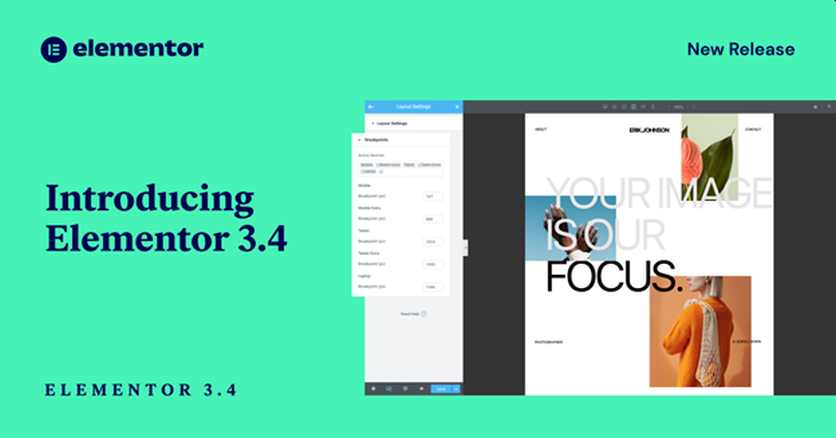How Elementor 3.4 Powers Website Performance for Web Designers

Performance is more important than ever for modern websites. While creating a great-looking website on website design platforms is easy, optimizing it for performance is a tough task. Aside from streamlined visual elements, creators need to ensure that the website’s backend is geared towards enhancing performance.
Elementor’s latest release, Elementor 3.4, underlines the company’s focus on optimizing performance for web creators. Given the increasingly high scrutiny search engines place on a website’s page loading speeds, these releases come at just the right time.
Here’s how Elementor is powering website performance to the next level.
Less Code Loading
Irrelevant code calls do more to slow a website down than anything else. Typically, HTML calls reflect a website’s dependence on old browsers and older Javascript libraries. As technology has improved, native browser support accounts for many old library calls, and the result is bloated code that drags performance down.
Elementor’s 3.4 release improves server response time by up to 23%, and reduces the memory usage by ~5%. Additionally, it saves approximately ~30% off of data traffic to the Editor load, contributing to a major performance boost. While fewer HTML callouts are important, they have to be backed up with other efforts.
Minifying HTML, CSS, and Javascript is a great way of reducing the page load burden on a website. Eliminating the bloat of loading unused code is also an effective step in boosting performance. Elementor’s previous releases incorporated these changes, along with features such as conditional asset loading and reduced extra DOM elements.
The result is that website creators can now create some of the best-performing websites on the internet today.
Custom Breakpoints
Offering developers customized breakpoints was a core focus of Elementor’s latest release. Given the variety of platforms on which users access websites these days, incorporating responsive design elements is critical. While breakpoints offer creators the ability to design responsive websites, using them without impacting performance is a challenge.
Elementor 3.4 allows designers to introduce customized breakpoints across 7 devices namely desktop, mobile, mobile extra, tablet, tablet extra, laptop, and widescreen. Providing users with an optimal web browsing experience no matter the platform is now seamless.
In addition, Elementor 3.4 offers an improved Font Awesome SVG icons mechanism, along with 6 additional custom breakpoints. These updates are in line with previous performance-related updates that incorporated smaller asset files, a conditionally loaded lightbox, and style inline loading.
The result is a fully responsive website design platform that creators can now use to its full potential.
Increased Optimization
While the features included in the current release go a long way towards improving website performance, there are other improvements in the pipeline. Elementor’s commitment to enhancing website performance is underlined by its aim to optimize Javascript and CSS further.
In addition, reducing dependencies on Javascript and CSS libraries is a priority for future releases as well. Streamlined page loads and reduced asset file sizes round out some of the performance-enhancing features that Elementor is aiming to incorporate.
Thanks to these features website creators can expect even faster loading websites and provide users with a responsive browsing experience. Given the open-source platform’s history of delivering impactful updates, the community of web designers is sure to experience huge leaps forward.

